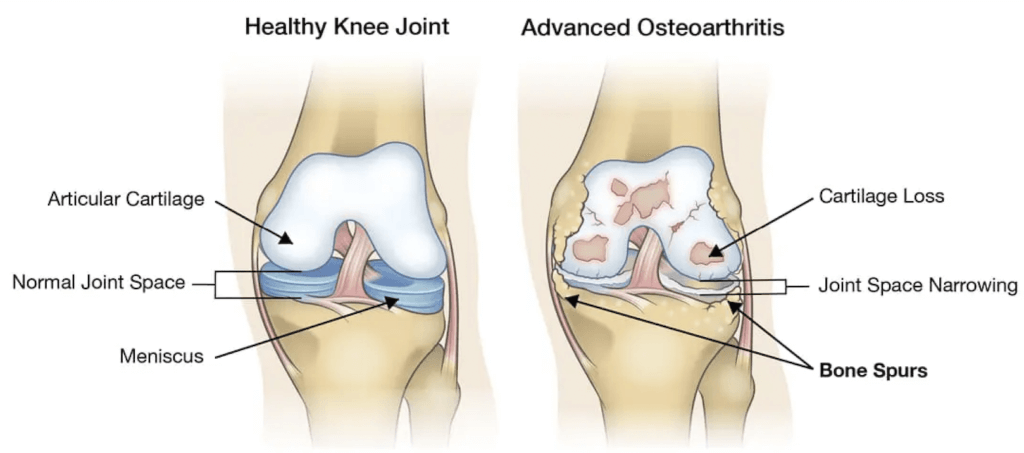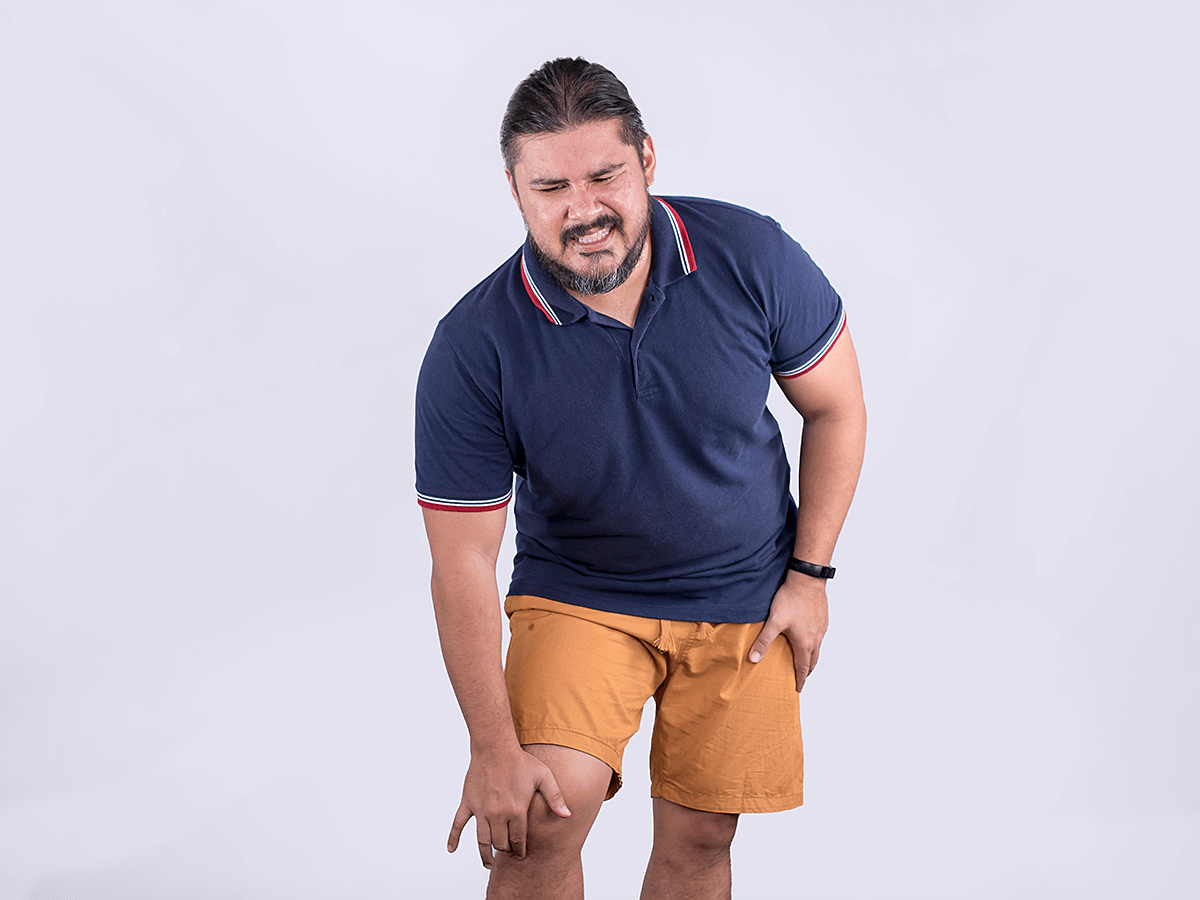Often in x-ray or MRI results, the written report may state that there are degenerative changes observed in the structures of the knee. Degenerative changes in the knee can be a source of discomfort and reduced mobility for many individuals, especially as they age. These changes can result from wear and tear over time, leading to conditions like osteoarthritis. However, with proper understanding and targeted physical therapy interventions, individuals can manage symptoms, improve function, and maintain an active lifestyle. In this blog post, we’ll explore degenerative changes in the knee and how physical therapy can help alleviate pain and enhance quality of life.
The knee joint is a complex structure that undergoes significant stress and strain throughout daily activities. Over time, this repetitive stress can lead to degenerative changes, such as cartilage breakdown, gradual tearing of the meniscus, osteophyte formation (bone spurs), and generalized inflammation. Osteoarthritis, the most common form of arthritis, often results from these degenerative processes, causing pain, stiffness, and reduced range of motion in the knee.

Symptoms of degenerative changes in the knee may include:
- Pain, especially with weight-bearing activities or after prolonged periods of inactivity.
- Stiffness, particularly in the morning or after prolonged sitting.
- Swelling or inflammation around the knee joint.
- Crepitus or grinding sensation with movement.
- Decreased range of motion and difficulty with activities like walking, climbing stairs, or kneeling.
Physical therapy plays a crucial role in managing degenerative changes in the knee. A skilled physical therapist can assess an individual’s specific impairments and functional limitations to develop a personalized treatment plan.
Here are some common interventions used in physical therapy for knee osteoarthritis:
- Therapeutic Exercise: A tailored exercise program can help improve strength, flexibility, and joint stability around the knee. Exercises may include gentle stretching, strengthening exercises for the quadriceps and hamstrings, as well as low-impact aerobic activities like swimming or stationary cycling.
- Manual Therapy: Hands-on techniques, such as joint mobilizations and soft tissue mobilization, can help reduce pain, improve joint mobility, and enhance tissue flexibility in the knee and surrounding structures.
- Modalities: Modalities like ice or heat therapy, ultrasound, or electrical stimulation may be used to manage pain, reduce inflammation, and promote tissue healing.
- Assistive Devices: The use of assistive devices like braces, orthotics, or supportive footwear can help offload the affected knee joint, improve stability, and reduce stress during weight-bearing activities.
- Education and Self-Management Strategies: Empowering individuals with knowledge about their condition and teaching self-management strategies, such as proper body mechanics, activity modification, and home exercise programs, are essential components of physical therapy for degenerative changes in the knee.
Degenerative changes in the knee can significantly impact an individual’s quality of life, but with the right approach, it’s possible to manage symptoms and maintain function. Physical therapy offers a comprehensive approach to addressing pain, improving mobility, and enhancing overall well-being for individuals with knee osteoarthritis or other degenerative changes. By working closely with a skilled physical therapist and adhering to a personalized treatment plan, individuals can take proactive steps towards a healthier, more active lifestyle despite degenerative changes in their knees. Call Respire Physical Therapy at 703-671-1871 or click here to schedule an initial evaluation with a physical therapist today! 
Tags: knee osteoarthritis, movement is medicine, choosept, arlingtonva, alexandriava, fallschurchva, ptworks, Physical Therapy, annandaleva, Respire Physical Therapy, painfreeliving, physical therapist, health blog, knee pain, pt education



